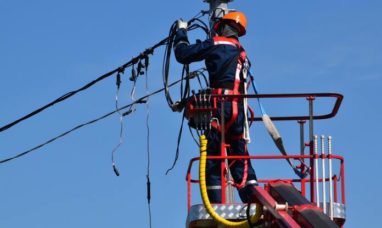You arrive home from a strenuous day in the sun, grab a cool drink, and turn on your air conditioner to relax. After a little while, you notice that the tank is empty of water. You muster the willpower to replenish it and return to bed. This time, a few minutes go by, but the cooler is no longer “cooling”!
Have you ever been in a similarly bad situation in the summer, when it’s hot and dry, and even a small breeze is worth a lot?
Yeti coolers can cool the air and are cheap appliances that last a long time. However, they need to be maintained regularly for the best performance. Simple steps often work well, like changing the water and cleaning the water tank on a regular basis. You can also make a few tiny adjustments to the way you use the air cooler to significantly boost its performance.
To make sure your air cooler operates effectively this summer and helps you battle the heat with a chill, we’ve compiled these 6 straightforward instructions.
1. Check for Proper Room Ventilation
In contrast to air conditioners, air coolers function best in well-ventilated spaces. As a result, reliable airflow is required for air coolers to provide efficient cooling. Also, a space needs to have enough airflow to get rid of dampness.
The rear side of the air cooler should be exposed to the outside environment, such as a window, door, or home’s galley. Make sure the cooler has “exclusive airflow” as another piece of helpful advice. This means stopping any extra airflow or air leaks that could affect how well the building cools.
2. Yeti Coolers’ Positioning Is Crucial
The way air coolers work is based on the theory of evaporative cooling, which says that the more hot air that comes in, the faster the water will evaporate, making the air cooler. Place your air cooler close to a window so that it receives enough fresh air and can distribute the cool air it creates to the far ends of the room.
Air coolers with a strong air throw (from 50 to 90 feet) will be appropriate if your space is medium to large. Here, you can look at Bajaj’s high-performance air coolers with Typhoon Blower and Turbo Fan technology.
3. Verify the full water level
Air and water are necessary for the evaporative cooling process, as was already established. The water level needs to be kept at the proper level to continue the chilling process as new hot air is brought into the cooler.
Always ensure that there is enough water in the tank because running the air cooler with insufficient water can result in catastrophic damage. The yeti cooler will work at its best and have a longer lifespan if there is always an adequate water level.
4. Include Ice for Extra Cooling
Most people use air coolers after the water tank is full. However, you can benefit much more from the water if you add some ice to it. For example, contemporary air coolers from Bajaj have specific ice sections.
As you add more ice to the chamber, the pads get cooler, further lowering the airflow’s temperature. Simply pack the ice chamber full of ice cubes to experience the soothing air.
5. Wet the Cool Pads Before Using Them
The performance of the Air Cooler is improved by pre-cooling the pads. For greater effectiveness, it is advised to keep the water pump going as you fill the air cooler with water. This lowers the temperature of the air being drawn in and enables the cooling pad to soak up the water before use. You can turn on the air cooler’s fan and enjoy a pleasant breeze after the tank is full.
6. Use an Air Conditioner With Humidity Control
In order to chill the air, yeti coolers add moisture to it. Humidity, though, can also thwart the evaporative cooling procedure. You must therefore find a means to control the humidity. Most of the time, enough ventilation will be enough to reduce humidity, but if you want to keep the temperature you want, you might want to use an air cooler with built-in humidity control.
Whether you like personal coolers, tower coolers, desert coolers, or window coolers, Bajaj’s line of modern air conditioners has a humidity control valve built in to help you select a pleasant temperature for the room.
Featured Image: Rolling Stone © Jeremy Koreski







